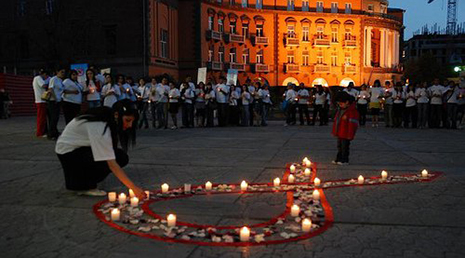World Aids Day is annually observed on December 1 to raise people’s awareness of the global pandemic caused by the HIV virus.
The disease statistics, published by Armenia’s Ministry of Health, a reveals 1,906 cases registered in the country from October 31 1988 until October 31 2014; the highest rate – 238 cases - was observed in 2013.
The overwhelming majority of the patients – 1,315 people (69%) – are reported to be males, with women’s number being 591 (31%); in 38 cases (2%), the virus was detected in children.
The data further reveal that 53% of the patients were aged 25-39 at the time of being diagnosed.
In Armenia, the disease is predominantly transferred from person to person through heterosexual intercourse (63%) or transmitted through interveinal drug injections. There have also been cases of homosexual or mother-to-child transmission.
Of the 979 HIV-infected patients (255 women and 21 children) who later developed AIDS, 143 were diagnosed in 2013. A total of 403 deaths (69 women and seven children) have been registered to date.
Almost all the patients infected through interveinal injection of drugs were males; the female patients predominantly contracted the virus through an intercourse (97%).
Speaking to Tert.am, Hovhannses Madoyan, a member of the NGO Real World, Real People, said they annually observe an increase in the disease rate, especially in the past five years.
“That’s due to the increasing access of HIV diagnostics. As many of our citizens go to Russia to work, they are required to undergo a medical check-up to obtain the right to employment, so there’s a great number of those who return after being diagnosed with AIDS in Russia,” he explained.
He said the highest disease rate – 654 cases (34.3%) – has been registered in capital Yerevan, with the Shirak region coming the second.
Madoyan said he now sees an increasing awareness of HIV/AIDS in the Armenian society. “But we do not yet see anyone voluntarily and consciously applying for diagnosis; that phenomenon is not yet spread in Armenia, with fear and stigma still being prevalent. People are now quite well-aware of the ways [the disease] is transmitted, but the awareness of the treatment opportunities is too low. So if a person is not aware that there is a treatment method enabling him or her to enjoy a full-fledged life, he or she does not see any point in being diagnosed,” he added.
More about:
















































